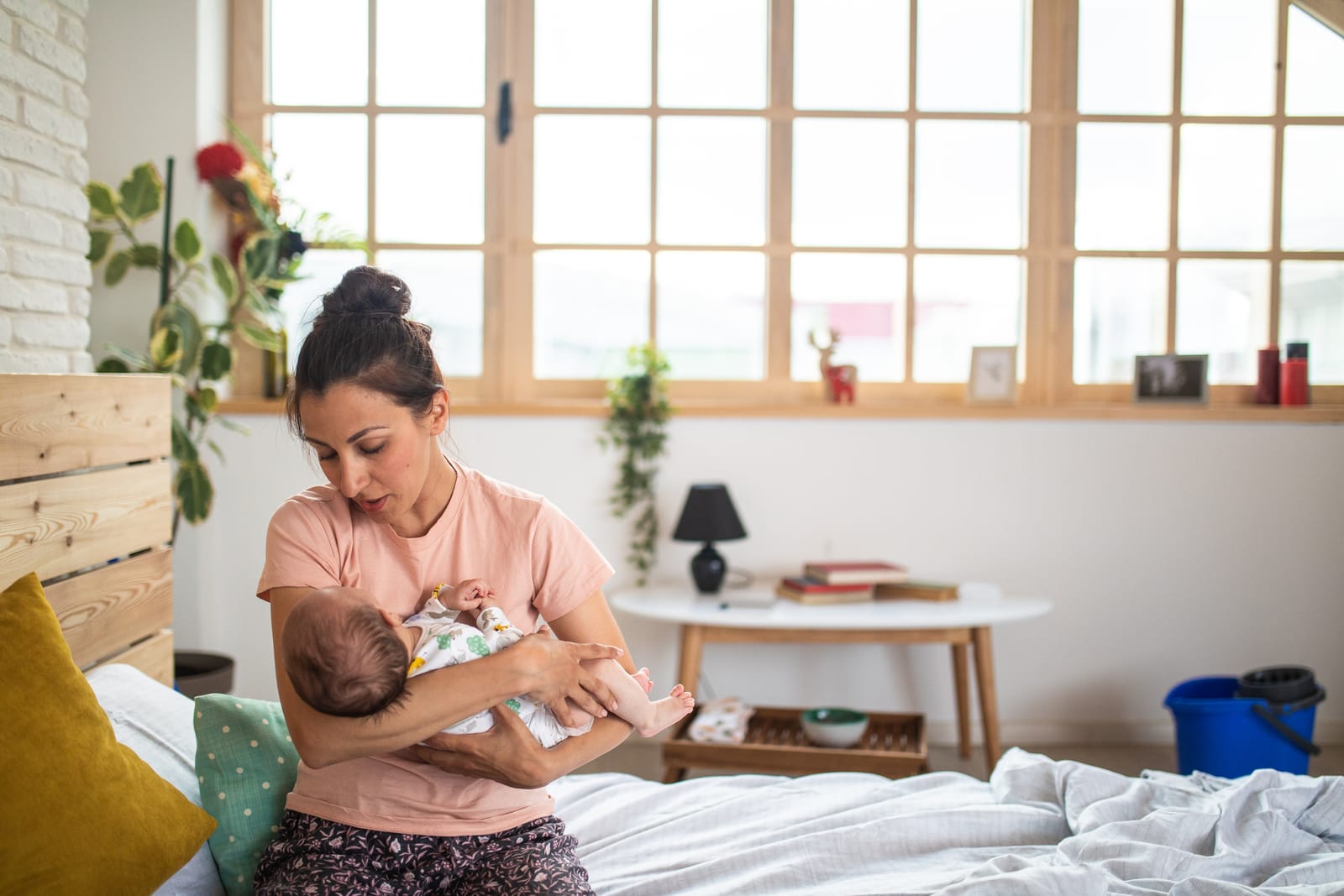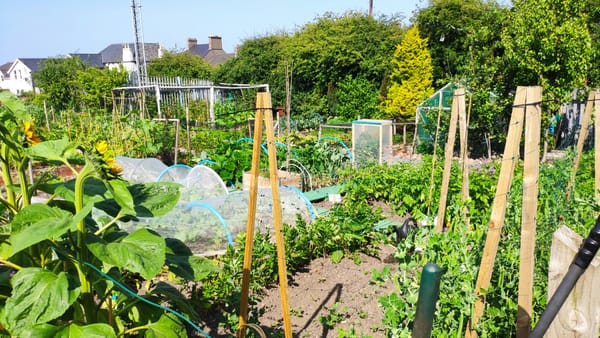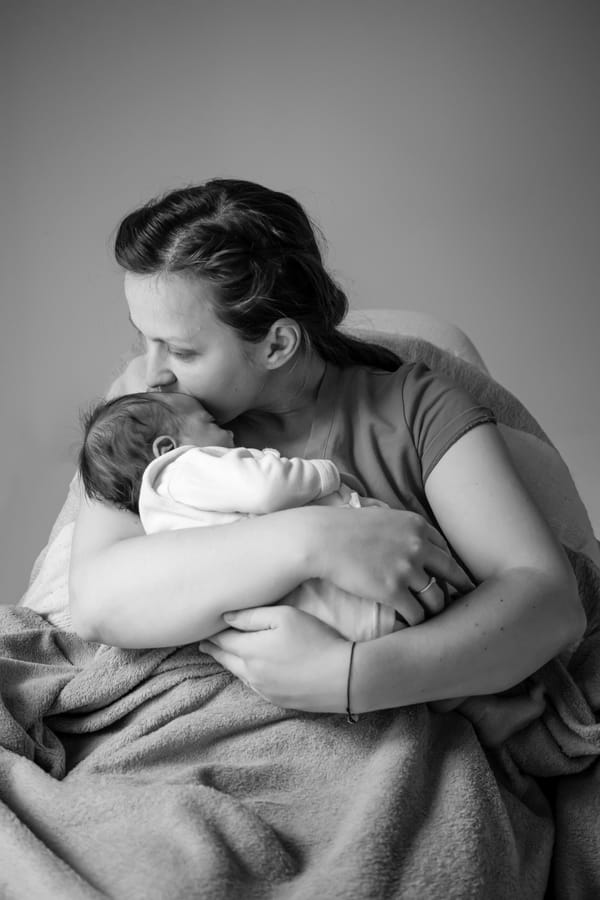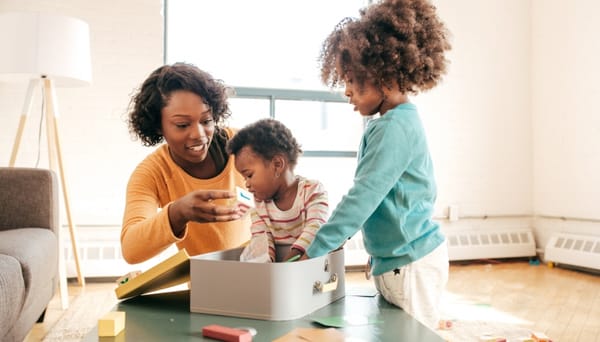Feathering your nest with the finest natural, sustainable and toxic-free products to give your little one the best start in life
Exposure to toxic chemicals and pesticides is a feature of everyday life in our homes, workplaces and in the wider environment. There are tens of thousands of chemicals in regular commercial use, most with little or no health and safety information, many of which can harm our health, our capacity to reproduce, and the health of our children and future generations.
Children are particularly vulnerable but to the developing foetus even small exposures can have serious and lifelong health consequences. That is why eliminating these chemicals from your home is an important first step to minimising exposure both when thinking of becoming pregnant and afterwards to protect you and your family.
There's no one perfect way to raise a green baby and you can only do your best given your current circumstances. Try to change the things within your control and lend your voice to campaigns, such as Wen's Green Baby campaign, calling for a sustainable and toxic free future so all parents and carers can make safe, healthy and affordable choices for themselves and their children.
So where to start?
A toxic tour of your home might not sound as exciting a prospect as a family day out, but it's where Wen (Women's Environmental Network) suggests starting the journey of greening your home. So, whether you're already a parent or carer, a mother-to-be, just thinking about becoming a parent, or have never even given it a first thought, start now by casting a critical eye on what's in that cupboard under the kitchen sink, the bathroom cabinet, garden shed… and move out from there, until you've completed the grand tour and can begin feathering that nest..
1. A toxic tour of your home
More fun than it sounds, very educational and a good place to start preparing your nest. A toxic tour means firstly identifying what needs to be changed, and drafting up a plan for immediate, short or long-term changes, and ‘I wish’ categories. You may find there are things you do not need at all! Find Wen’s Toxic Tour guide here.
2. Start now, start small, question everything
Small changes can have a big impact and can kickstart a change in mindset. After your fun toxic tour, you may have already found things you don't need, so that's already a win! You can't change everything at once and to try could be overwhelming. Choose something like a toiletry you use often, or conversely rarely. Start to question: Do I need it? What's in it? Where is it made? How is it packaged? What happens to it when I'm finished with it? Could I make it or source an affordable safer alternative? The greenest changes can be (though are not always) the easiest and the most affordable. (see Wen's what to avoid & safer alternatives for general advice).
3. First stop – the bathroom cabinet
If after your toxic tour and a bit of research, the view into your toiletry bag or the bathroom cabinet doesn't look too pretty, don't be disheartened, there are easy wins to be made here. All toiletries and cosmetics must have ingredients listed on the label (parfum/fragrance is an exception and can be a loophole [1]), so in theory, at least you know what's in it.
Manufacturers must use an international standard of scientific names for ingredients or latin for plant materials, so understanding labels is easier said than done. Some better brands include plain English names which helps. The fewer products you use, the better, as this reduces the cocktail or mixture effect [2] of exposure to many different ingredients and helps reduce the 120 billion units of plastic packaging used by the beauty industry each year. [3] Having a go at making your own natural skincare or finding out how to source safer alternatives can be good next steps.
4. Stop to freshen up - DIY natural skincare and sourcing safer alternatives
You may have had an easy win and realised there are things you can do without, but if there's a must-have you're concerned about, look into whether you can easily make an affordable safer alternative. Many suppliers now sell in small quantities, ingredients used by certified organic natural skincare formulators, such as organic and fairly traded shea and cocoa butter, plant or beeswax and carrier oils.
Becoming your own skincare alchemist can be fun, easier than you might think and strangely empowering! A simple balm also suitable for babies is a good one to try first. (See Wen's make your own resource). If DIY is not an option for you, with time or other practical constraints, look for natural organic products, certified by bodies such as the Soil Association, COSMOS, ECOCERT, NATRUE, USDA. There are also apps now to help you to decipher ingredient lists, such as Yuka or INCI Beauty. Safer, greener alternatives are not always the cheapest option, which is why campaigns such as Wen's Green Baby project are so important. A safe environment is a right not a privilege to be afforded by some.
5. The lesser-visited corners of the under-sink kitchen cupboard
The cupboard under the kitchen sink tends to be where many people store laundry and cleaning products. Again, there can be easy wins here, as many products we can simply do without or make or source safer alternatives. Question the need for products, such as air fresheners, fabric softener, oven cleaners, window cleaning products, anti-bacterials.
Bicarbonate of soda, vinegar and lemon juice are often good, safer substitutes for many of these products and improving ventilation rather than using air fresheners is a much better option. Many cleaning and laundry products in everyday use contain harmful chemicals that can have adverse effects on our health and the environment, causing indoor and outdoor pollution when released into the air and water. They can also be absorbed through our skin or inhaled, posing risks to our respiratory system, endocrine system, and overall well-being. Babies and young children are particularly vulnerable. (See Wen’s DIY cleaning product suggestions)
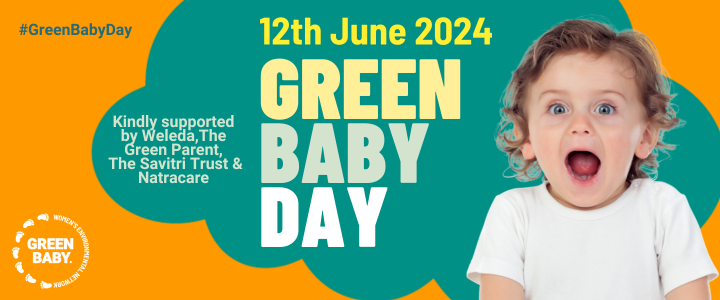
6. A food-stop
It's not news that plenty of fresh fruit and vegetables form an important part of a healthy diet. Ideally, everyone would have access to affordable, certified organic food that is grown without reliance on herbicides and pesticides.
Washing fruit and vegetables does help but many pesticides cannot be washed away, peeling is best unless you have grown them yourself. While we wait and campaign for effective government subsidies to make certified organic food more affordable, we should aim to purchase as much organically grown food as we can - home and locally grown is also good. Plastic food wrapping is also a huge topic and a potential source of harmful chemical exposure.
7. A change of scene - renovation
It's natural to want to create a safe, fresh, nurturing environment to welcome a baby into your home. Ideally, this should happen well before you become pregnant or bring the baby home.
Many paints and varnishes can contain Volatile Organic Compounds (VOCs) which are harmful to health and can be absorbed by soft furnishings and carpet and released back into the air afterwards. Stripping old paint and wallpaper can also be a source of exposure. Thankfully, there are now more eco and zero VOC paints and safer natural materials available, but if you are planning to renovate or paint, when pregnant, it’s best to let someone else do the work and ventilate as much as possible afterwards. Take in the fresh air on that tour!
8. A rest-stop - flooring and furniture
If you rent, or money is tight, new flooring and furniture may not be possible or may need to go on that longer-term wish-list, but knowledge is power and it's good to be aware.
Babies spend a lot of time on the floor and close to the ground, so the best option for flooring is hardwood, cork or tiles, supplemented with washable rugs if needed. Carpets [4] can absorb chemicals and release them slowly back into the environment over time. They can also be treated with toxic flame retardants and be backed with a synthetic layer which may contain harmful chemicals including PFAs. [5] Carpets can also build up dust mites and act as a sink for dust.
Second hand or pre-loved wooden furniture is a good option, it can be cleaned down or sanded and re-varnished with low or no VOC varnish, or wax. Avoid plastic and vinyl if you can. When it comes to where your baby sleeps, slatted bed bases and natural fabrics that allow airflow are recommended.
9. Tour complete, nest feathered – ready for that new member of the family.
Once the baby arrives, there's a whole host of other things to consider, clothes, toys, nappies, bathtime… but already having that awareness of how to minimise exposure within your home, will stand you in good stead to make healthier choices, particularly as small babies and infants are much more sensitive to harmful chemicals than adults.
The changes you make as a result of your tour will have beneficial effects on the health of the whole family, including your pets. In the absence of proper regulations to ensure that the products on our shop shelves are safe to buy, we need to take matters into our own hands. This doesn't mean we leave retailers and our governments off the hook. They have the responsibility to ensure all products are safe before sale, for current and future generations. This will also benefit our environment being stripped of raw materials for unnecessary products, but also for the workers whose occupations expose them to harmful chemicals and practices.
Now your toxic tour of your home is complete, you can settle back with peace of mind.
MORE INSPIRATION
GET INVOLVED See how you can support this year’s Green Baby Day of action on 12th June 2024.
READ For further information and references, please see the Wen Briefing Feathering Your Nest
[1] https://www.safecosmetics.org/chemicals/fragrance/
[2] https://www.edc-free-europe.org/articles/reports/chem-trust-why-you-should-know-about-the-mixture-effect
[3] https://www.plasticpollutioncoalition.org/blog/2022/1/25/the-ugly-side-of-beauty-the-cosmetics-industrys-plastic-packaging-problem
[4] https://taenk.dk/kemi/english/avoid-pfas-carpets
[5] https://athleteproject.eu/news/endocrine-disrupting-chemicals-in-pregnancy-and-metabolic-syndrome-in-children/


